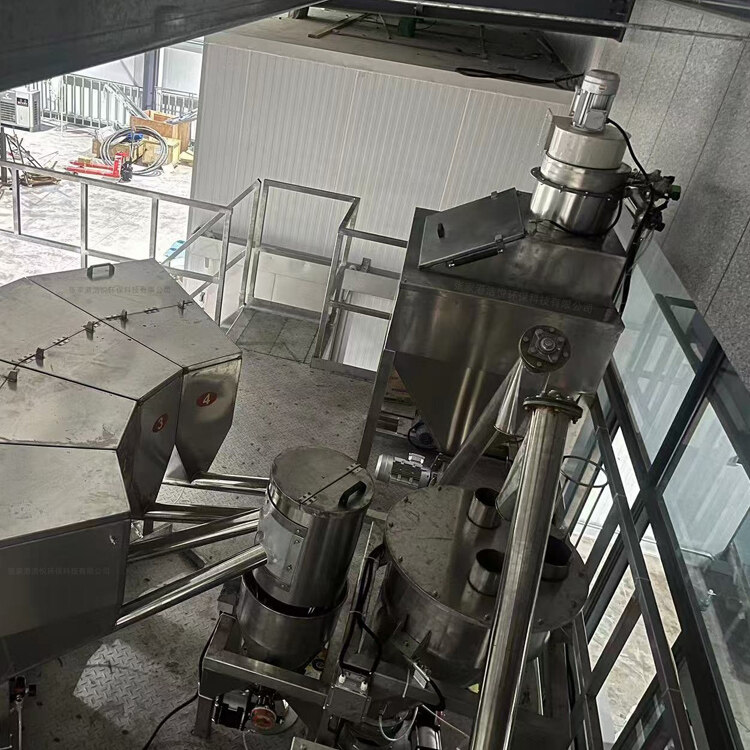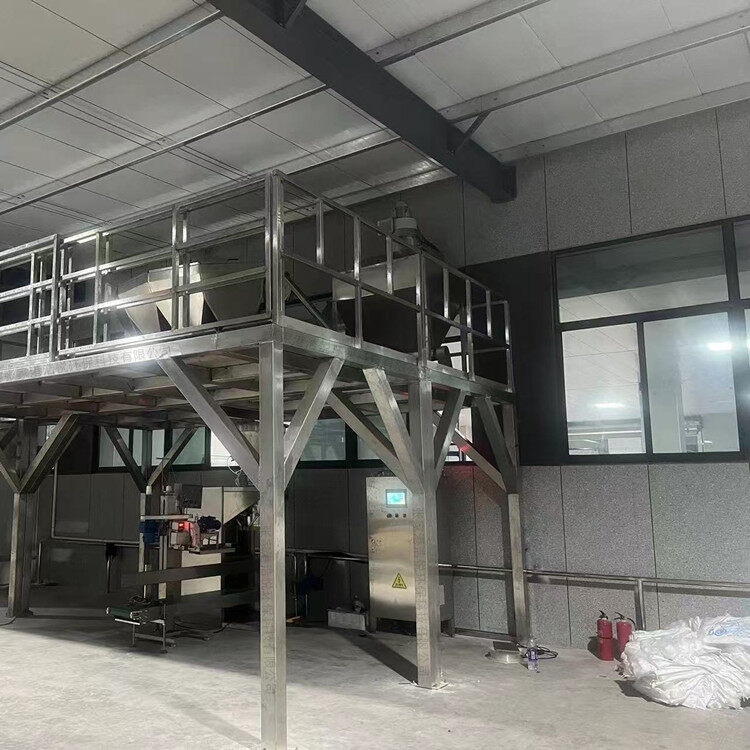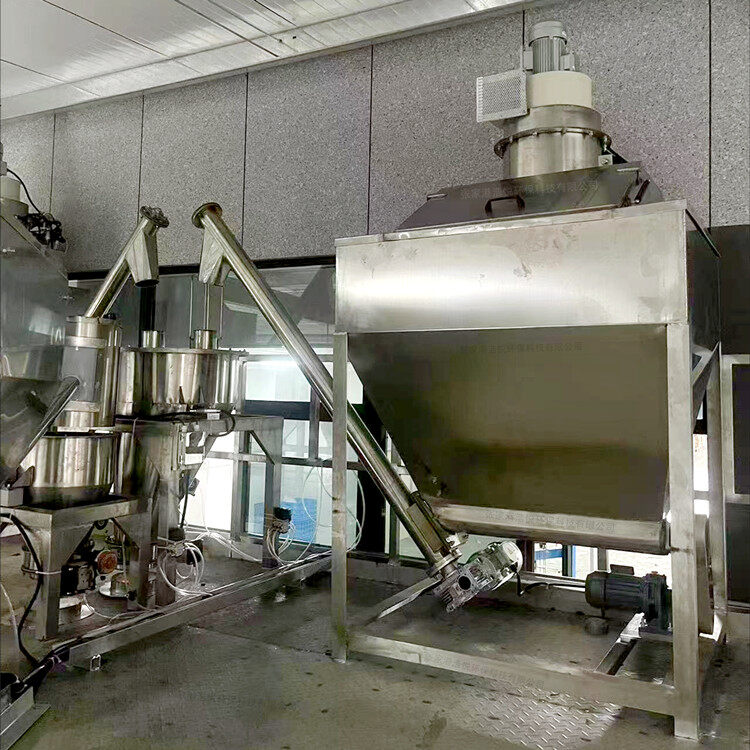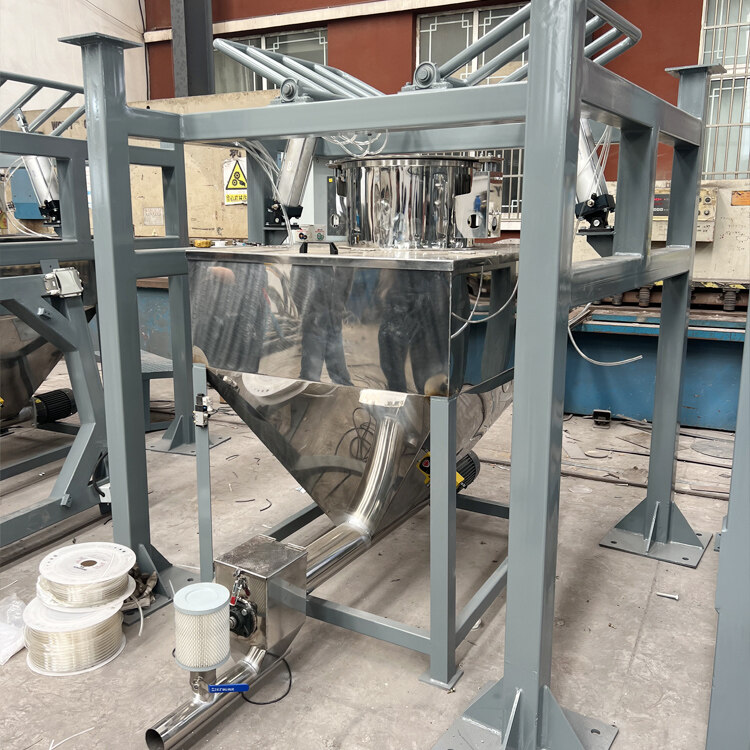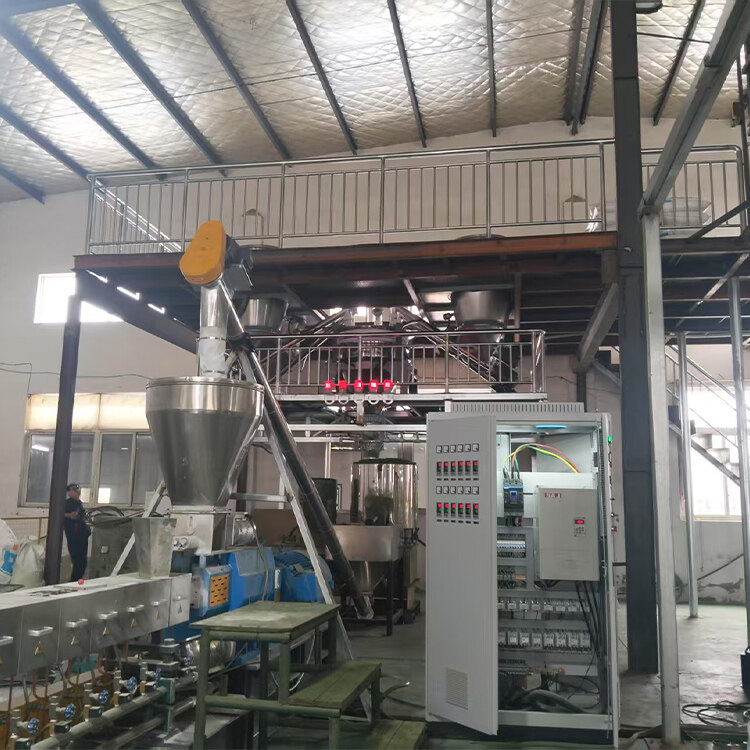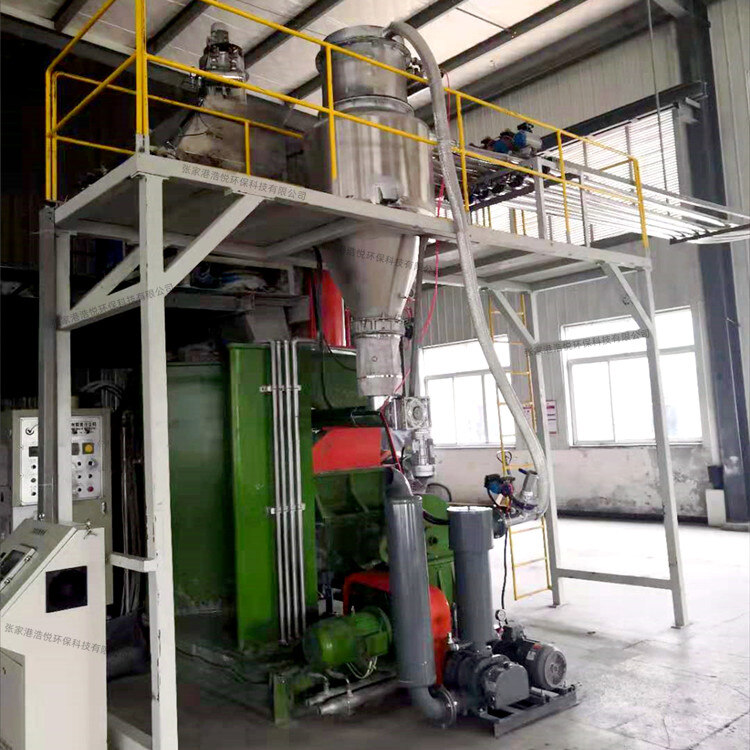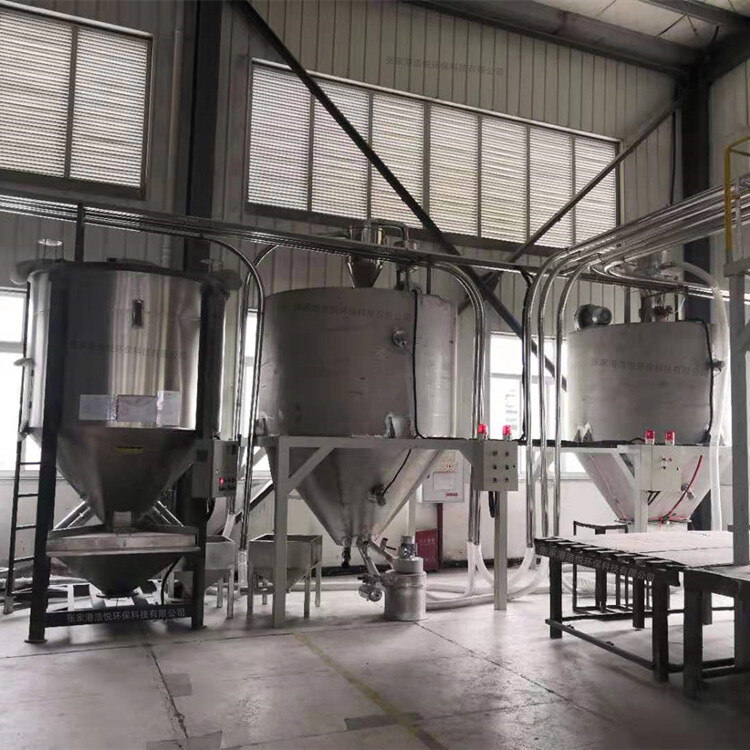- Introduction to automatic batching machine and fully automatic batching machine equipment
- The powder metering system tells you about the introduction of the mixing and drying machine
- 1000kg vacuum feeding machine
- Fully automatic small material batching system
- Research on Innovation of Automatic Weighing Machine Technology
- Design and operation of automatic batching system using PLC, industrial computer and frequency converter
3 types of auxiliary materials, 2 types of main materials, ingredient packaging machine
- Category:Automatic measuring packaging machine
- Hits:190次
- Release Date:2025-06-30
- Share:
- Inquiry
- Details
In industrial production, precise material ratio is the key to ensuring product quality and performance. High precision batching machines have emerged to meet the demand for high-precision batching of three types of auxiliary materials and two types of main materials. This type of equipment achieves precise weighing, proportioning, and conveying of multiple materials through advanced technology and precise design, and is widely used in industries such as food, chemical, and pharmaceutical industries that require strict ingredient accuracy. The following will provide a comprehensive introduction to the device structure, working principle, core technology, application scenarios, and development trends.
1、 Overall structure and composition of the equipment
The high-precision batching machine for 3 types of auxiliary materials and 2 types of main materials mainly consists of five parts: material storage unit, measuring unit, conveying unit, control system, and mixing unit.
(1) Material storage unit
This unit sets up independent storage containers for five types of materials. For example, large capacity storage bins are usually used for main materials, equipped with level sensors to monitor material storage in real time and prevent material breakage; Small storage tanks or hoppers are used for auxiliary materials. Depending on the characteristics of the materials, some containers also have functions such as moisture resistance, light avoidance, and temperature control. For example, sealed vacuum tanks are used to store auxiliary materials that are prone to moisture absorption to ensure stable material quality. The storage containers for different materials are arranged independently of each other to avoid cross contamination.
(2) Measurement unit
The measuring unit is the core of achieving high-precision batching. Multiple measurement methods are used to combine the different characteristics and dosage differences of main and auxiliary materials. For the two main materials, due to their large usage, high-precision weighing sensors combined with weighing measuring buckets are often used for measurement, with an accuracy of ± 0.1%; Due to their small usage, the three auxiliary materials are measured using a micro screw scale, precision plunger pump, or high-precision balance to ensure that the weighing error of the micro materials is controlled within ± 0.05%. Each material's measuring equipment is equipped with an independent control system, which can accurately adjust the feeding speed and measuring value.
(3) Conveyor unit
The conveying unit is responsible for accurately conveying the measured materials to the mixing unit. The main materials are usually conveyed by belt conveyors, screw conveyors, and other methods to ensure the stability and efficiency of the conveying process; Due to the small amount and easy residue of auxiliary materials, pneumatic conveying or micro screw conveying are often used to avoid material residue in the conveying pipeline, which may cause proportioning deviation. At the same time, the conveying pipeline is designed as an independent channel to prevent materials from mixing with each other during the conveying process.
(4) Control system
The control system is the "brain" of the batching machine, usually using PLC (Programmable Logic Controller) or industrial computer as the core control unit. The operator inputs the production formula through the human-machine interface (HMI), including the types, ratios, batches, and other information of the main and auxiliary materials. The control system coordinates and controls the feeding equipment of each material storage unit, the start stop of the measuring unit, and the operation of the conveying unit based on preset parameters, achieving fully automated batching operations. In addition, the system also has real-time monitoring and feedback adjustment functions, dynamically adjusting the ingredient process through sensor data to ensure ingredient accuracy.
(5) Mixed unit
The mixing unit is used to thoroughly mix the two main materials and three auxiliary materials that are metered and transported. Common mixing equipment includes double screw belt mixer, planetary mixer, etc. By using different mixing methods and speed settings, the material is ensured to achieve uniform mixing in a short period of time, providing qualified materials for subsequent production processes.
2、 Working principle and process
Firstly, the operator inputs the production formula and batch information on the human-machine interaction interface of the control system. After receiving the instruction, the control system sequentially starts the feeding equipment of the five material storage units and transports the materials to the corresponding measuring units. The sensors in the measuring unit monitor the weight or volume of the material in real time, and automatically stop feeding when the preset measurement value is reached. Subsequently, the conveying unit transports the measured main and auxiliary materials to the mixing unit in the set order and time. In the mixing unit, the materials are thoroughly stirred and mixed to form a uniform material mixture, completing the entire batching process. During the batching process, the control system continuously monitors the data of each link. Once there is a measurement deviation or equipment failure, an alarm is immediately issued and corresponding corrective measures are taken.
3、 Core technology and precision assurance
(1) Dynamic weighing compensation technology
In response to measurement errors caused by factors such as drop and vibration during the feeding process of materials, the high-precision batching machine adopts dynamic weighing compensation technology. Real time collection of weight change data during the falling process of materials through sensors, combined with algorithms to predict and adjust the amount of materials about to fall, ensuring the final measurement accuracy.
(2) Micro material measurement technology
For the micro measurement of three auxiliary materials, technologies such as screw precision feeding and peristaltic pump quantitative conveying are used. Screw feeding achieves stable transportation of trace materials by precisely controlling the speed and pitch of the screw; The peristaltic pump utilizes the elastic deformation of the hose to precisely control the volume of material conveyed each time, meeting the high-precision requirements for micro batching.
(3) Error prevention and pollution prevention design
In terms of structural design, each material channel is independent of each other and adopts a quick detachable connection for easy cleaning and maintenance, preventing material residue and cross contamination; At the same time, the equipment is equipped with automatic calibration function, which regularly calibrates the measuring equipment to ensure the accuracy of measurement during long-term use.
4、 Application scenarios
(1) Food industry
In the production of baked goods, it is used to accurately ratio flour (main ingredient), sugar (main ingredient), yeast, salt, and additives (auxiliary ingredients) to ensure consistency in taste and quality of products such as bread and cake; In the production of dairy products, the proportion of milk (main ingredient), cream (main ingredient), essence, sweetener, and nutrition enhancer (auxiliary ingredient) should be precisely controlled to improve the flavor and nutritional value of products.
(2) Chemical industry
In the production of coatings, high-precision batching is carried out on resins (main materials), solvents (main materials), pigments, fillers, and additives (auxiliary materials) to ensure that the coating's covering power, adhesion, and other performance standards are met; In the production of rubber products, accurately proportioning raw rubber (main material), carbon black (main material), vulcanizing agents, accelerators, anti-aging agents (auxiliary materials) can improve the physical properties and service life of rubber products.
(3) Pharmaceutical industry
In the production of solid dosage forms, precise weighing and proportioning of active ingredients (main ingredients), starch (main ingredients), lubricants, adhesives, and disintegrants (auxiliary materials) are carried out to ensure accurate drug dosage and stable efficacy, in compliance with GMP (Good Manufacturing Practice) requirements.
5、 Development Trends
In the future, high-precision batching machines for three types of auxiliary materials and two types of main materials will develop towards intelligence, integration, and green direction. In terms of intelligence, artificial intelligence and machine learning algorithms are introduced to enable equipment to automatically optimize ingredient parameters based on production data; In terms of integration, it deeply integrates with management systems such as ERP (Enterprise Resource Planning) and MES (Manufacturing Execution System) to achieve collaboration in production planning, material management, and ingredient operations; Greening is reflected in reducing equipment energy consumption, minimizing material waste, and adopting environmentally friendly materials and processes to meet the needs of sustainable development.



